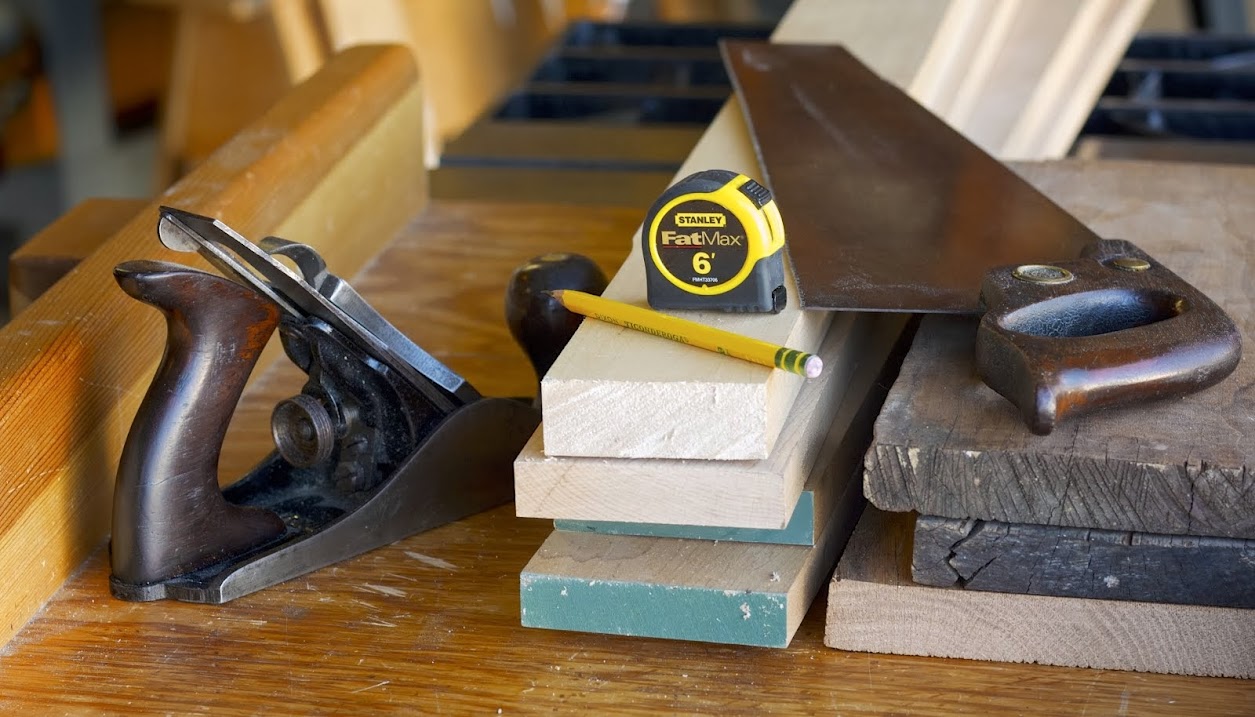
A sturdy mallet is an essential tool in hand woodworking. I started by using an old "yard sale" rawhide mallet that was OK for light work, but lacked sufficient force for other applications. Making my own mallet was a great exercise in handwork. Careful layout, sawing, planing, and joining were necessary to complete the project.
I found a plan on the internet, gathered some sturdy dense maple hardwood and began the project.
First step was to face glue two pieces of 6/4 maple to form the mallet head. I squared and dimensioned the block with the hand saw and jack plane.
 |
| Squaring the Mallet Head with the Smooth Plane |
The next step was to cut a mortise through the head to accommodate the handle. This operation was a real challenge. I had to cut through dense maple hardwood and taper the mortise to create a fit for the handle. I used a brace and bit to bore out some of the material. Sharp chisels and patience finished the mortise.
 |
| Mortise on the Mallet Head |
After finishing the mortise, the head was cut to the finished length. The ends of the head were tapered and a decorative arch was planed on the top of the block.
 |
| Crosscutting the Head to Length |
 |
| Tapering the End of the Block |
 |
| Planing an Arch on the Top of the Head |
Finally, I put a slight chamfer on all the edges for decoration and to prevent the corners from chipping.
After some final sanding, the mallet head was set aside.
 |
| Block Plane used to Chamfer the edges. |
The handle was worked on next. A piece of 4/4 maple was cut to length and surfaced to 3/4" thickness using the Jack Plane.
 |
| Surfacing the Handle with a Jack Plane |
 |
| Freehand Cutting with the Band Saw |
The Band Saw was used to rough cut the handle taper and width.
 |
| Low Level Block Plane Shaping the Taper |
The Low Level Block Plane was used to shape the handle taper and to smooth the curve.
 |
| Spokeshave |
I used a spokeshave to shape a chamfer on the corners of the handle for a comfortable grip.
After fitting the tapered handle into the matching taper on the head, the mallet was lightly sanded and three coats of Tung Oil applied.
After fitting the tapered handle into the matching taper on the head, the mallet was lightly sanded and three coats of Tung Oil applied.
The reward of my effort is a mallet with a custom-fit grip and the pleasure of having built a useful tool that will see years of use.










































